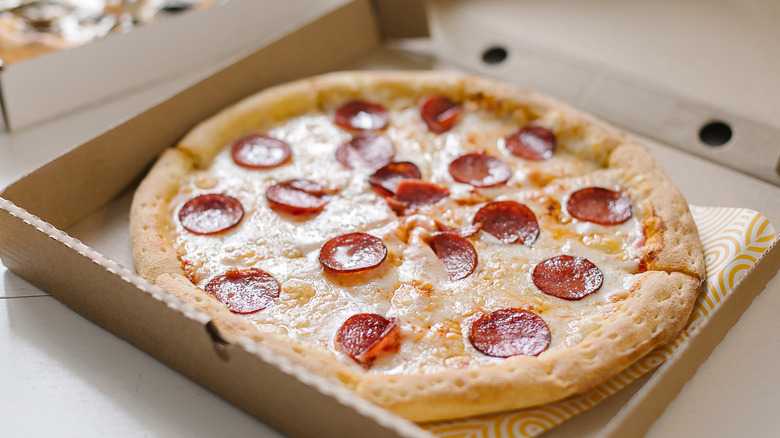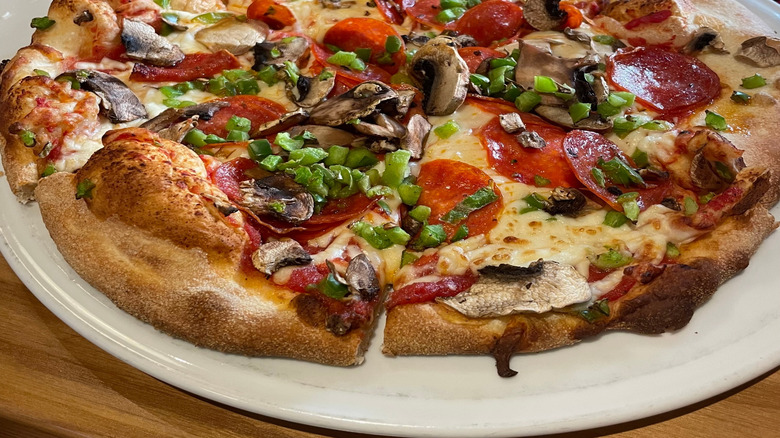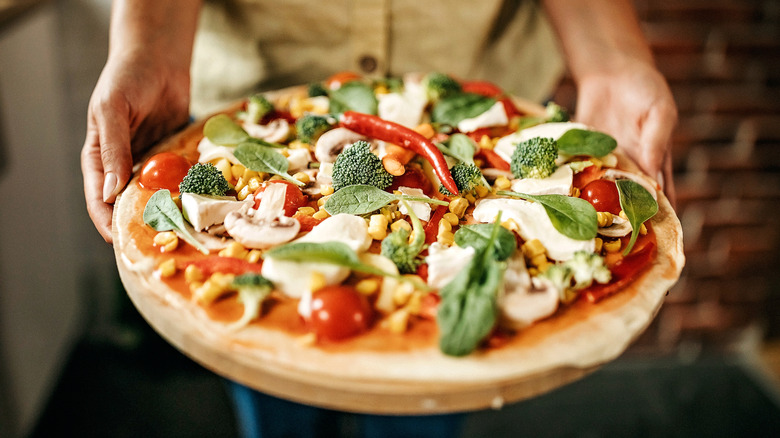Why Are Some Pizza Slices So Greasy?
Pizza grease is the telltale shine that either delights or horrifies depending on where you fall on the pizza-loving spectrum. We've all been there, dabbing away at a pie to get rid of some oil before eating it or folding a slice to let the grease run out (unless you enjoy a greasy slice, and hey, we're not judging). But, what actually causes this glossy, messy, deliciously indulgent phenomenon? The answer, my fellow pizza fans, lies in the kitchen science of fat.
Grease on your pizza comes from the fat released during cooking, whether from the cheese, the toppings, or even the dough itself. As the pizza bakes in a piping-hot oven, these fats melt and pool on the surface, creating that signature greasy sheen. It's not just the toppings — though pepperoni is a notorious grease contributor — but also factors like olive oil or buttered crusts that add to the equation.
Whether you embrace the slick or shy away from it, the grease is as much a part of some pizzas as the crust and sauce, adding to the magic that makes this Italian staple a worldwide favorite. So, whether you live in the city with the best pizza in the world (NYC, of course) or you're making it from scratch at home, knowing what contributes to the greasiness can make all the difference to your pizza-eating experience.
What makes pizza greasy?
First and foremost, let's talk cheese. The rich, melty mozzarella that crowns most pizzas is a big player in the grease game. As it heats up in the oven, the fat in the cheese separates and rises to the surface, creating a shiny layer that often signals "This is going to be delicious." Cheeses with higher fat content, like whole-milk mozzarella, will naturally create more grease compared to lower-fat or part-skim versions.
Then there's the ever-popular pepperoni. Those sizzling thin slices of meaty goodness render fat as they cook, which pools on top of the pizza in gleaming orange puddles. Other meaty toppings like sausage and bacon also bring similar grease loads to the party, especially when they're cooked right on the pizza.
And, let's not forget the crust. Most pizza dough recipes call for oil or butter, and many chains brush their crusts with additional garlic butter or olive oil before baking. It's no wonder some slices feel more decadent than others when grease is part of the charm.
How to make a leaner pizza
Not all pizzas are destined to be grease-laden slices, however. Some toppings and preparation methods actually work in the opposite direction. Veggie pizzas, for example, are typically lighter in the grease department, as vegetables don't render fat like meats. Think fresh tomatoes, bell peppers, or mushrooms. These toppings release water instead of oil when cooked, which evaporates with the heat of the oven and can even offset some of the richness of the cheese.
Similarly, leaner proteins like grilled chicken or shrimp won't add much (if any) grease to the mix. The crust also plays a role: A thin, crispy crust baked in a wood-fired oven usually skips the heavy oils that thicker, chain-style crusts rely on for flavor. Some of the best pizzas in the world, including many of New York City's legendary offerings, achieve their perfection through simple, balanced ingredients without overloading on fat.
Finally, if you're making pizza at home, opting for part-skim mozzarella or skipping that final drizzle of olive oil can keep things light without sacrificing flavor. Because whether you're Team Grease or Team Lean, there's a pizza out there for everyone.


